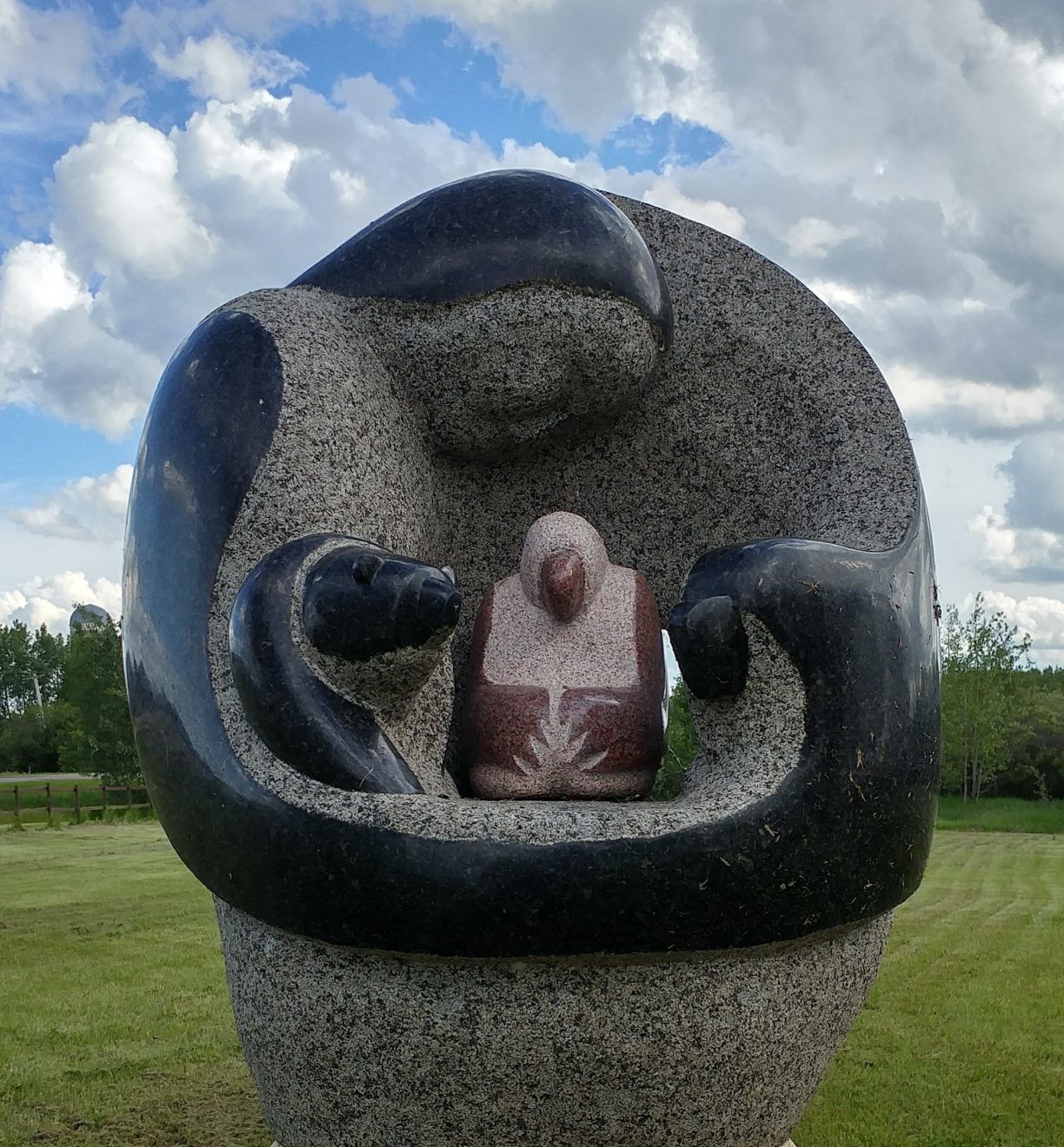This article was published in the Summer 2017 edition of Public Interest Alberta’s newsletter, The Advocate.
If you want proof that a lie can travel half way around the world while the truth is putting its shoes on, look no further than residential schools in Canada.
For more than 130 years we’ve been hearing the lies about these infamous institutions – that they were created to integrate Indigenous Canadians into the mainstream society, that they were intended to offer education to First Nations children. That narrative continues to shape how many people feel about First Nations.
After much more than a century, the truth has a lot of catching up to do. Only now are we beginning to understand what happened, the kidnapping, the torture, the mental abuse, the destruction of families, communities and cultures.
It was with this in mind that members of the board and senior staff at the Health Sciences Association of Alberta (HSAA) decided to visit Blue Quills, the former residential school in St. Paul, and talk to people who were sent there and survived. It was an uncomfortable, but important, experience.
Blue Quills opened as a residential school in 1931. In 1970, after a sit-in by Indigenous activists that lasted 17 days and negotiations with Jean Chrétien, then Minister of Indian Affairs, the school was handed over to the Blue Quills Native Education Council. The next year, it opened with a new purpose, aiming to have “children progress in the white man’s education, while continuing to retain their dignity and self-respect as Indian people.”
Today, it offers university degrees taught in First Nations languages and training for jobs; it teaches the story of residential schools and engages in intergenerational healing for Indigenous communities, with a focus on language, culture and restoring Indigenous identity; and it educates other Canadians about residential schools.
“Some of the stories were really awful – the kinds of things that, if they occurred in a school today, we would be laying criminal charges and putting people in jail for significant periods of time,” says HSAA board member and Edmonton paramedic Kris Moskal. “They talked about having to help bring their siblings to the grave and things like that. Really awful stories.”
Listening to Indigenous people who had actually attended Blue Quills when it was a residential school made the stories powerful. Hearing people recount personal experiences is much more intense than reading about it or hearing it second or third hand.
What they described was “like a concentration camp,” says Moskal. “Very, very tight cramped quarters, massive shared toilet facilities, they were all assigned a number, they weren’t allowed to speak to each other by name. When they call it torture, I think that’s a really reasonable word to use to describe how they broke these people down.”
 Fellow HSAA board member Scott Budgell, a public-health inspector from Red Deer, said that before visiting Blue Quills he thought he understood what happened at these institutions.
Fellow HSAA board member Scott Budgell, a public-health inspector from Red Deer, said that before visiting Blue Quills he thought he understood what happened at these institutions.
“My uncle, my mother’s brother, was sent to a residential school so I thought I understood. His time at the residential school was never spoken of, so I thought I understood. My uncle, on my wife’s side of the family, taught at Blue Quills residential school so I thought I understood,” he says. “Until I listened to the words and heard the stories, I did not know.”
He adds: “There were no choices given when the RCMP came and simply stated: ‘Surrender your child or go to jail.’ Children were shipped off to residential school, were separated from their families, had their hair cut off, their clothing removed and were washed down with kerosene. They were scared and they were alone. They no longer had names, they had become a number.”
Children who required care and protection instead were abused, beaten and forced to give up their way of life.
Budgell refers to a quote from Duncan Scott Campbell, deputy superintendent general of Indian Affairs from 1913 to 1932, to sum up the state’s appalling attitude towards these children.
“It is readily acknowledged that Indian children lose their natural resistance to illness by habitating so closely in these schools, and that they die at a much higher rate than in their villages,” Campbell said. “But this alone does not justify a change in the policy of this Department, which is being geared towards the final solution of our Indian problem.”
Budgell says: “We knew what was happening and yet we did nothing.”
Canada is only now beginning to do something, beginning to talk about residential schools, the effects they had on those who attended, and continue to have on First Nations families and communities.
For those conversations to be successful, they have to be honest, says Moskal. Without truth, there can be no reconciliation. We have to understand what the residential-school experience did to those who endured it.
“I put myself in that context and imagine what kind of person would I be as an adult if that had been my childhood. … I struggle to think that I would even be functional after going through a decade or more of that,” he says.
The effects of residential schools aren’t limited to those who attended – they are passed on to successive generations.
“So many of their second and now third generation out of residential school, they’re not even fully aware of what that story was because when their parents came out of the residential schools, they never spoke about it.
“This wasn’t a civilized conversation that you would sit around and have at the dinner table: ‘Hey. Remember that time when we were at the residential school and you were so afraid to get up and go to the bathroom, because if they ever caught you in the hallway you’d catch a beating, then you peed your bed and they found out you did and they rubbed your face in it so hard they broke your nose.’ ”
That was one of the true stories told during the visit to Blue Quills.
One of the areas that Blue Quills now works on is educating Indigenous people about what happened at residential schools and how it shaped, and continues to shape, their family dynamics – why their families seem different from the “norm” you might see on TV.
Much like soldiers returning from war with Post-Traumatic Stress Disorder (PTSD) who don’t talk about what happened to them, school survivors are often reluctant to talk and they share some of the same coping problems.
Canadians have a moral and ethical responsibility to fix this, says Moskal, even if some people today might claim they weren’t individually responsible for the schools and that it’s all history.
The last Canadian residential school didn’t close until 1996. Even for the ones that closed earlier, the lingering damage to communities will continue until it is addressed by us as a society. If we continue to do nothing now – about the effect schools continue to have, about the massive inequality between Indigenous Canadians and others, about the lack of clean water in many First Nations communities – we’re no better than previous generations who did nothing.
The labour movement can be a leader in this, says Moskal.
“There have always been things that the labour movement has said, from a values position, we must pursue. It may initially be unpopular, it may be uncomfortable, we may take heat from all over the political spectrum … but we were always on the right side of history,” he says.
The labour movement was on the front lines of the gay-rights movement and it can be on First Nations issues.
“I would argue this is most certainly one of those times where we will be seen … to have been on the right side of history, to be pushing publicly at the forefront as much as we can.”
For more, please read the article ‘I thought I understood’ residential schools, but I did not know by Scott Budgell.
For more about Blue Quills, please read this CBC article.
To see a brief videos on residential schools, please click here and here.


Above: HSAA Board Members Scott Budgell (left) and Kris Moskal.
